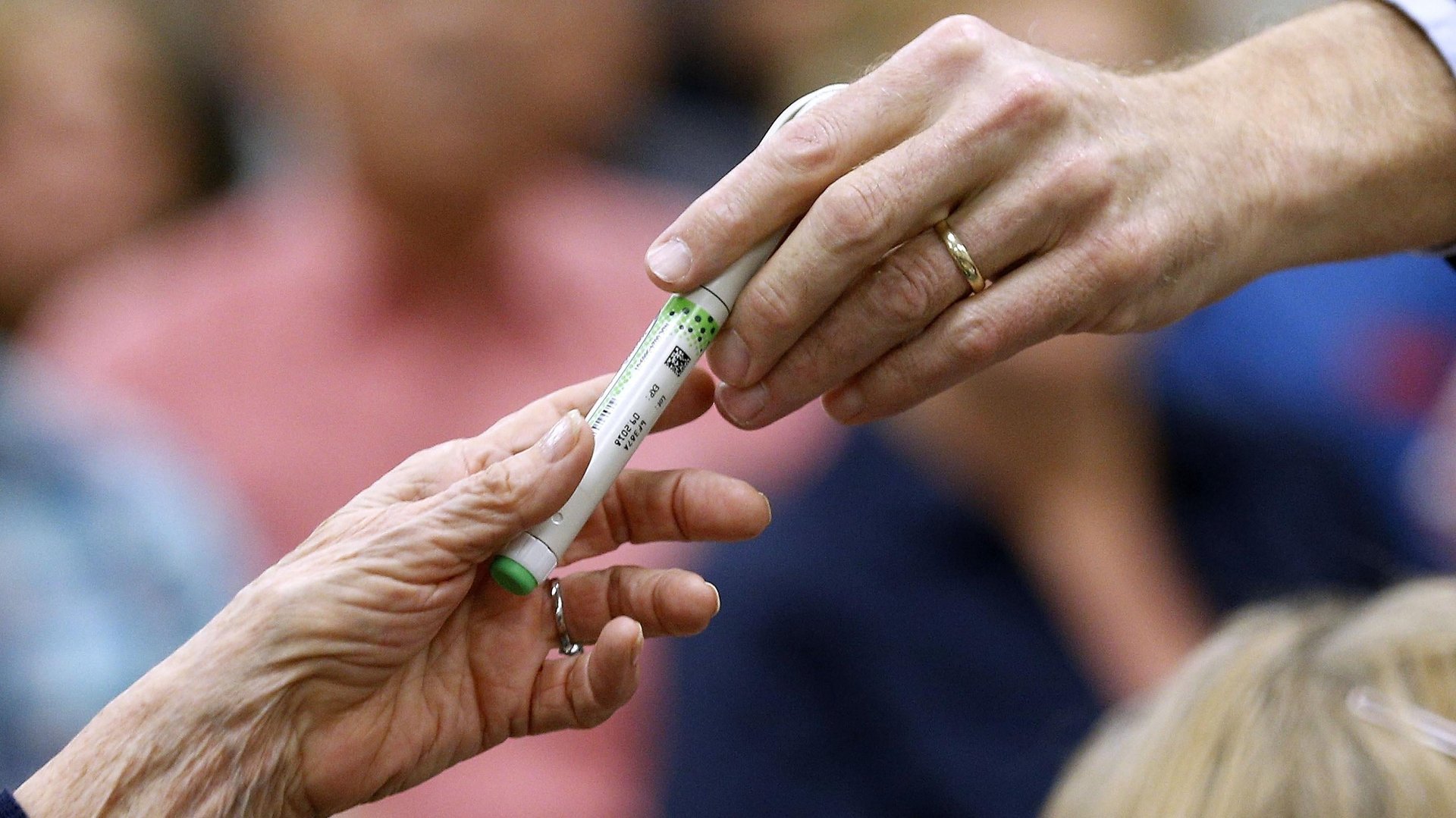Biden's plan is not going to lower the price of insulin
Most of the people who struggle to get insulin will continue to do so with a copay cap

Joe Biden is right: The cost of insulin in the US is astronomical—and completely unjustified.
“Insulin has been around for over 100 years. The guy who invented it didn’t even patent it because he wanted it to be available for everyone,” the US president said his Feb. 7 State of the Union address, calling out the greed of pharmaceutical companies. “It costs a drug company roughly $10 a vial to make that insulin—package it and all and you make it up to $13. But big pharma has been unfairly charging people hundreds of dollars, $400 to $500 a month, making record profits.”
“Not anymore,” he added emphatically, “not anymore.” He noted that since Jan. 1, the copay for insulin has been capped at $35 for seniors on Medicare, and exhorted congress to “finish the job this time” and expand the copay cap to the millions of Americans who aren’t on Medicare—200,000 of whom are Type 1 diabetics who need insulin to survive.
Biden was referring to a previous attempt at passing such reform, which failed in August last year when 43 Republican senators voted against it.
But that proposal would not, as the president promised, “cap the price of insulin at $35 for every American who needs it.” It would only control the copay for insured Americans, with no impact on the actual cost. At best, this would marginally reduce out-of-pocket spending for insured patients. At worst, it would squash any further pressure to make insulin affordable for everyone.
A copay cap is not a price cap
Because of the unique realities of the US healthcare system and legal landscape, pharmaceutical companies—namely Eli Lilly, Novo Nordisk and Sanofi, which produce insulin for the US—are able to sell their product for 10 times or more the price it has elsewhere in the world. A vial of insulin costs Americans $113 on average—a price that is increasing faster than inflation—and patients can need up to six vials per month.
For people with insurance, that cost is mostly hidden. Monthly copays only cover a small portion of it, and the rest of the bill is passed on in the less noticeable form of monthly premium increases. If the copay cap was introduced for all insured patients beyond Medicare, the median monthly savings would fall between $19 and $27, according to an analysis by the Kaiser Family Foundation. Meanwhile, the actual price of insulin would likely continue to go up unrestrained, as it has so far.
That would mean that uninsured or underinsured patients would continue to be forced to pay hundreds of dollars every month—at prices even higher than they are now. Many patients have already died as a result of having to ration their insulin due to its cost. If everyone else had a copay cap, they would likely be left behind in the fight to make the lifesaving drug truly accessible.